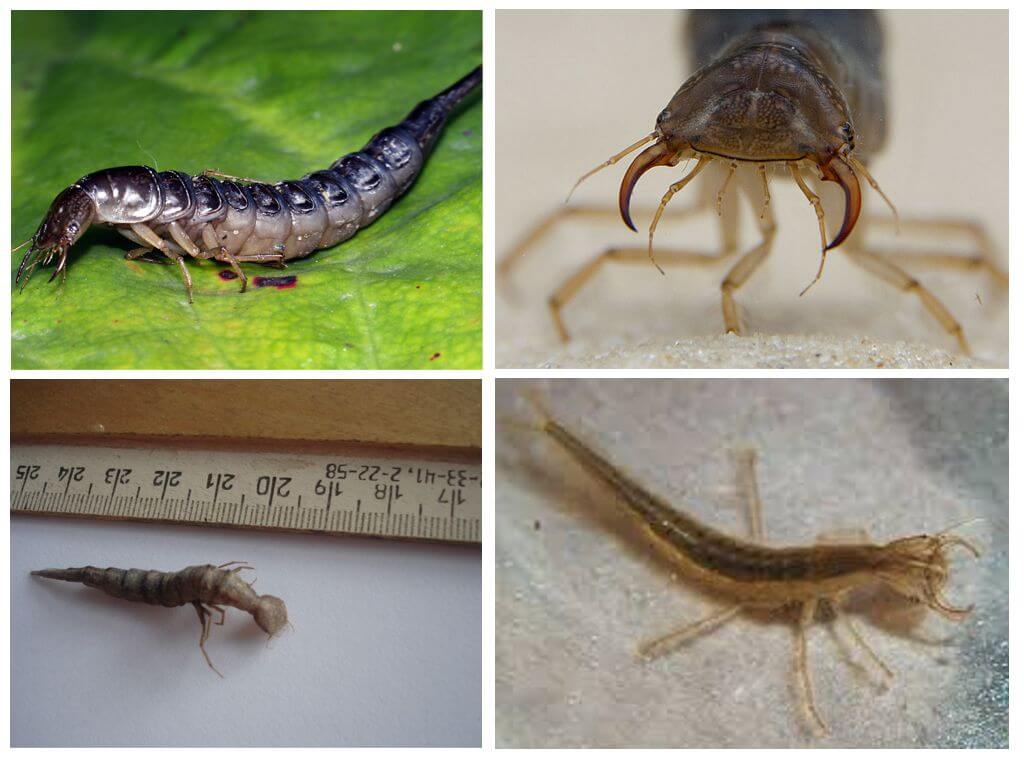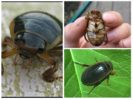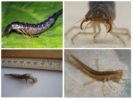- Bordered swimmer
- Swimmer
- Swimming grubs
- Swimming grubs
Swimming beetle - carnivorous insect, which is a representative of a large family of beetles. Due to its high adaptability to adverse environmental conditions, various species of this family can be found in the countries of Eurasia. Insects inhabit even North America and the Arctic regions.
The beetle lives in standing ponds, preferring deep and rich in animal bodies of water reservoirs. Indeed, according to the method of nutrition, the swimmer is a predatory insect, therefore, it is simply necessary for a good supply of food. However, under certain conditions, the swimming beetle can feel great even in an aquarium.
Features of the structure of the insect
The description of the swimming beetle has much in common with other members of this family. This is a fairly large insect - the body length of a swimmer is about 4.5 cm. Most representatives of this family are black in color. There is also a brown color of a swimmer with an olive tint. The long streamlined body contributes to the easy movement of the beetle in the water.
The body of the insect has three body parts motionlessly interconnected: the abdomen, head and chest. Moreover, the head of the insect is pressed into the chest, which smoothly passes into the abdomen due to fused pectoral segments.

Complex eyes are located on both sides of the head. So they are called because they consist of many simple eyes (about 9 thousand). This allows the insect to distinguish between objects surrounding it and the plant world. The role of the organs of touch and smell are whiskers antennas. The insect's oral apparatus is presented in the form of strong jaws, thanks to which the beetle grabs and grinds its prey. The structure diagram of the swimmer and the scheme with signatures are presented below.
The insect is kept on the plant with the help of two front pairs of legs, which have a grasping reflex. Gentle wings are protected by hard elytra, which are characteristic of all beetles of this family. This structure of the swimming beetle allows it not only to swim, but also to fly, which helps the insect to change its habitat if necessary. Although he does this only in extreme cases, for example, when the pond dries. The beetle uses the back pair of legs as oars. Below you can see how the swimming bug looks in the photo.
On the ground, the swimming beetle moves rather slowly, shifting from side to side. While walking, he goes over his forelegs, the back pair of legs serves to repel.
Interesting!
Most favorite habitat swimmers are bodies of water with stagnant water, with thickets of algae. Moreover, the strongest individuals are able to live even in a ditch or puddle.
What does the bug eat?

Diving beetles are predatory insects. They, like river creatures such as otters or beavers, can be dangerous to a whole population of fish. Small fish, insects, frog tadpoles, mosquito larvae, waterworms, as well as dead toads - this is what the swimming beetle eats.
Sufficiently sharp and wide mandibles of beetles are designed to destroy prey, the size of which may seem many times greater than their own. The swimmer is not afraid to attack even a large inhabitant of the reservoir.When attacking, the victim seeks to throw off the predator with a sharp movement. But the wound inflicted by the mouth of the beetle begins to bleed, as a result of which the allocated droplets of blood become a signal for the attack of the remaining swimmers.
On a note!
If you keep a beetle at home, then you can offer your fish or meat as food. It is not recommended to place the swimmer in the same aquarium with decorative fish, but the probability of a predator attacking them cannot be ruled out.
What kind of life do insects lead?
Despite the fact that swimmers are able to fly and move on land, their usual habitat for them is still water. Therefore, they spend most of the time in it, periodically floating to the surface. After all, insects breathe atmospheric air. To do this, the beetle exposes the back of its abdomen above water to fill a special cavity with another portion of oxygen.
With the advent of cold weather, swimmers hibernate, arranging cozy bedrooms for this purpose in the soil. There they stay throughout the winter.
Breeding

The process of reproduction of swimmers is activated with the advent of spring. Having left their shelters, the bugs set off in search of a pond. At the new habitat, they begin to choose a partner. In the process of fertilization, males do not show signs of gallantry. Having found a female, they attack her and hold her with the help of the suction cups located on the front legs.
But sometimes one female can mate with several males in a row. In such cases, the likelihood that she will survive is quite low. After all, swimmers are periodically forced to rise to the surface of the water in order to breathe. Being at the time of fertilization below, the female is deprived of such an opportunity. But the male, being on top, can linger at the surface and get the necessary amount of oxygen.
You should also take into account the fact that the mating process takes much longer than an insect can be without air under water. Therefore, if the female does not succeed in climbing up in time, she can simply suffocate from a lack of oxygen.
After mating, the female proceeds to egg laying. At one time, she is able to lay up to hundreds of eggs, and up to a thousand per season. She lays eggs on the stems of aquatic plants in the water. After a while, small larvae appear that are so voracious that they begin their hunt almost from the moment of birth.
Larval development
The larva of the swimming beetle, launching its powerful jaws into the victim's body, releases gastric juice. This composition liquefies the victim's insides, turning them into a liquid state. After that, the larva begins to eat, sucking food with two holes located on the sides of the jaw.

After two molts, young individuals tend to land, where they make shelter for themselves in moist soil. In it, they pupate, and remain there to live for 0.5-1 months (depending on weather conditions). After which a swimming bug emerges from the pupa. He spends about another 7 days underground, until his covers become strong. As soon as the bug acquires a strong carapace, it leaves its shelter and goes into the water. Life expectancy swimmer about a year.
Enemies of the Swimmer
The consequence of the appearance of beetles in fish farms or artificial reservoirs can be the destruction of a large number of fish. However, there are also creatures who eat a swimming bug in a pond with great pleasure - these are various invertebrates, large fish, birds and mammals.
Interesting!
At times of danger, swimmers give off a foul-smelling liquid that has a deterrent effect.
There are enemies in the larvae of swimmers. We are talking about a water parasitic insect - a rider, which has the strange name prestvichiya. Finding a swimmer's egg, the female rider lays its eggs in it.The resulting parasite larva will eat the insides of the victim’s egg until it turns into a chrysalis. The already formed adult individual of the rider comes into the light.








I saw such bugs in my pool. It turns out that it is better to get rid of them. I hadn’t attached much importance to this nuance before.
And why? Are you afraid that he will eat you? If there is stagnant water, then the opposite is cool - he will eat mosquito larvae and other evil spirits. These bugs are not needed where fish are bred.
Swimmers bite and hurt enough.
Yes, it was a matter of childhood - such a bug bit me. It hurt to tears.
A very serious predator, but from the outside it seems harmless.
It is good to catch pike on swimmers, and perch will not refuse such a treat.
Who knows how often you need to change the water in the aquarium with swimmers.
Water is changed as it becomes soiled, but at least once a week.
Are plants in an aquarium for beetles mandatory?
Plants can be artificial. Insects need them to rest. Also for this purpose you can use various driftwood or stones.
Living plants in an aquarium with swimmers can serve as an excellent natural filter. Floating species are especially good: salvinia, pistia, or hygrorhiza.